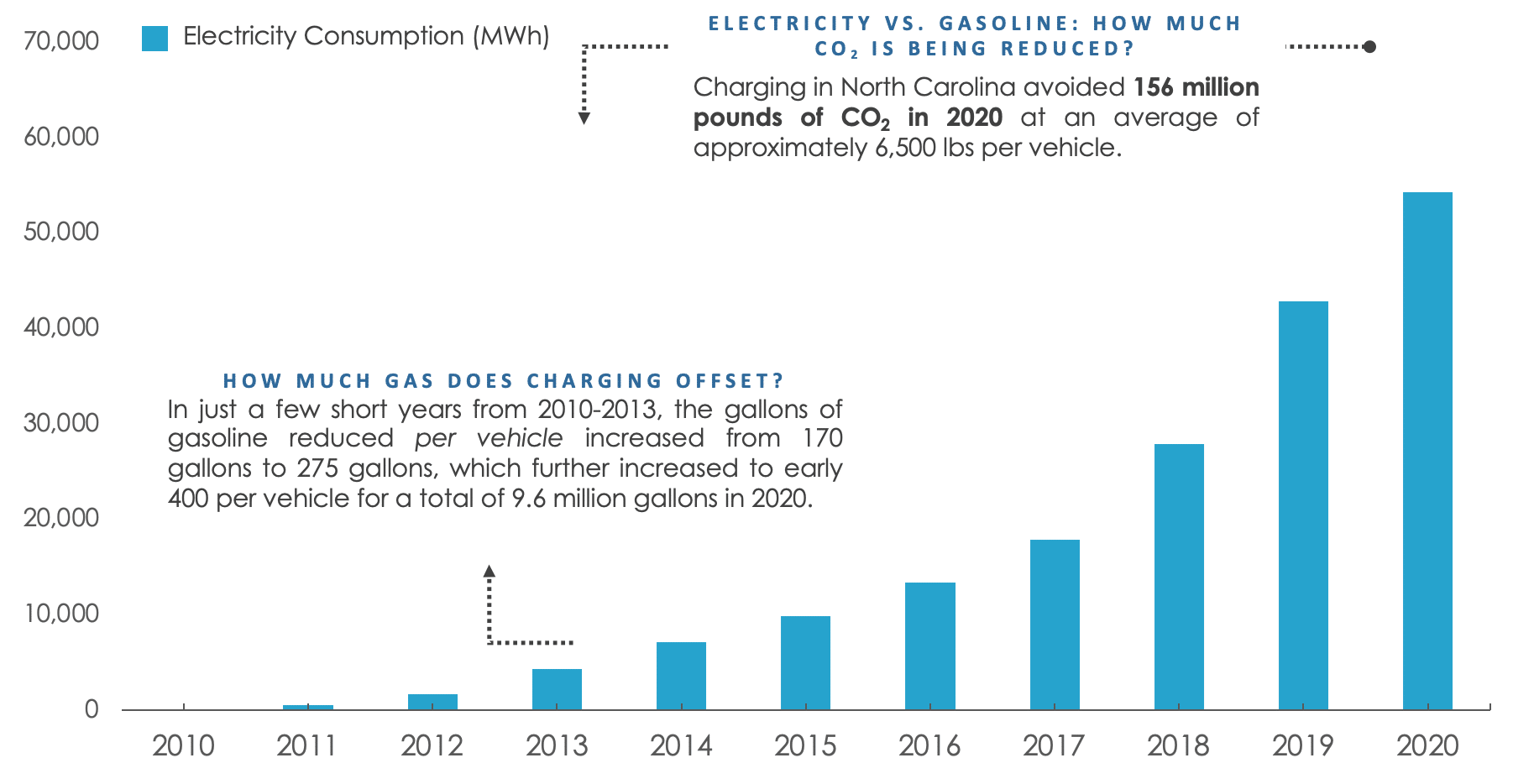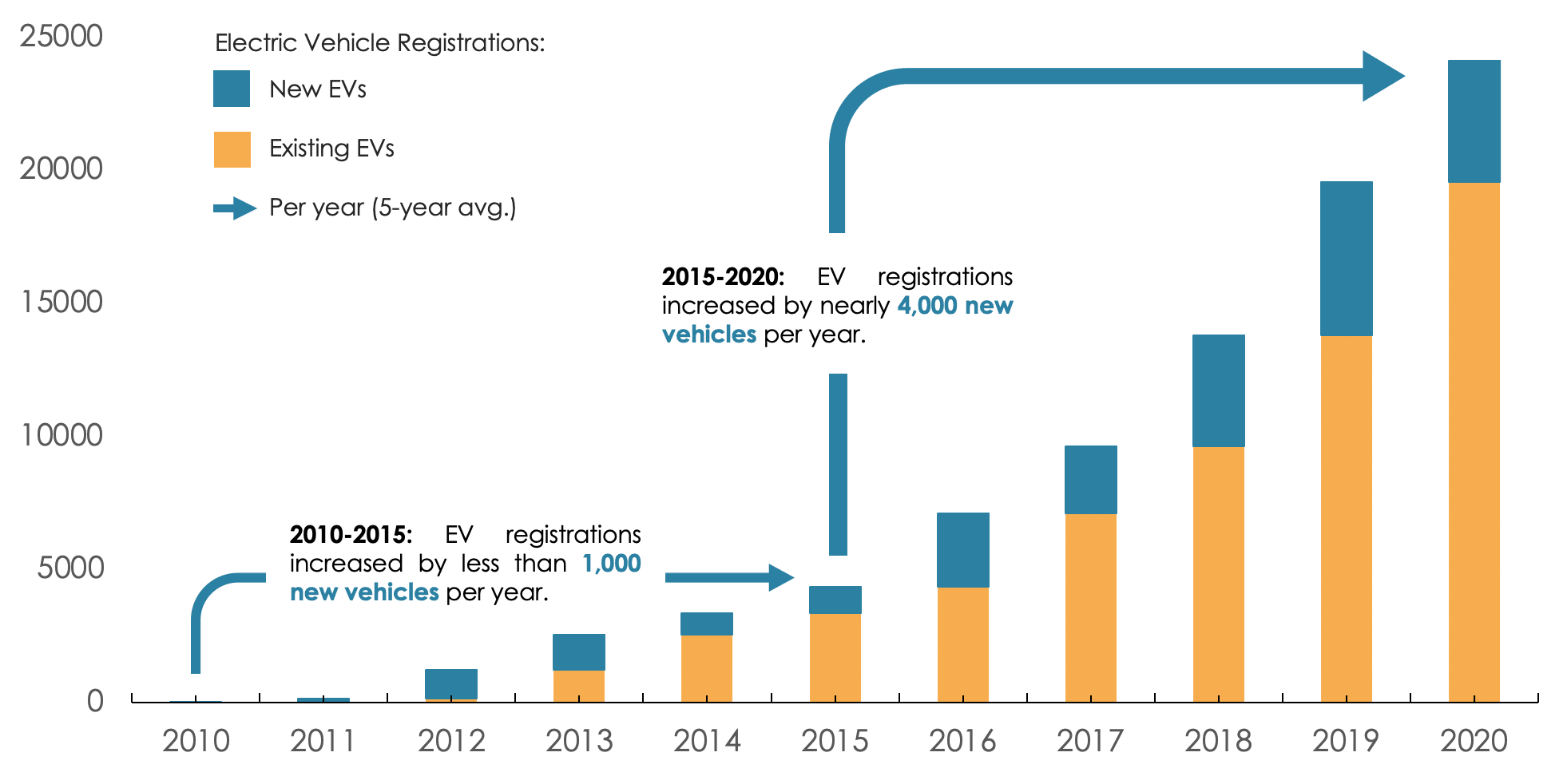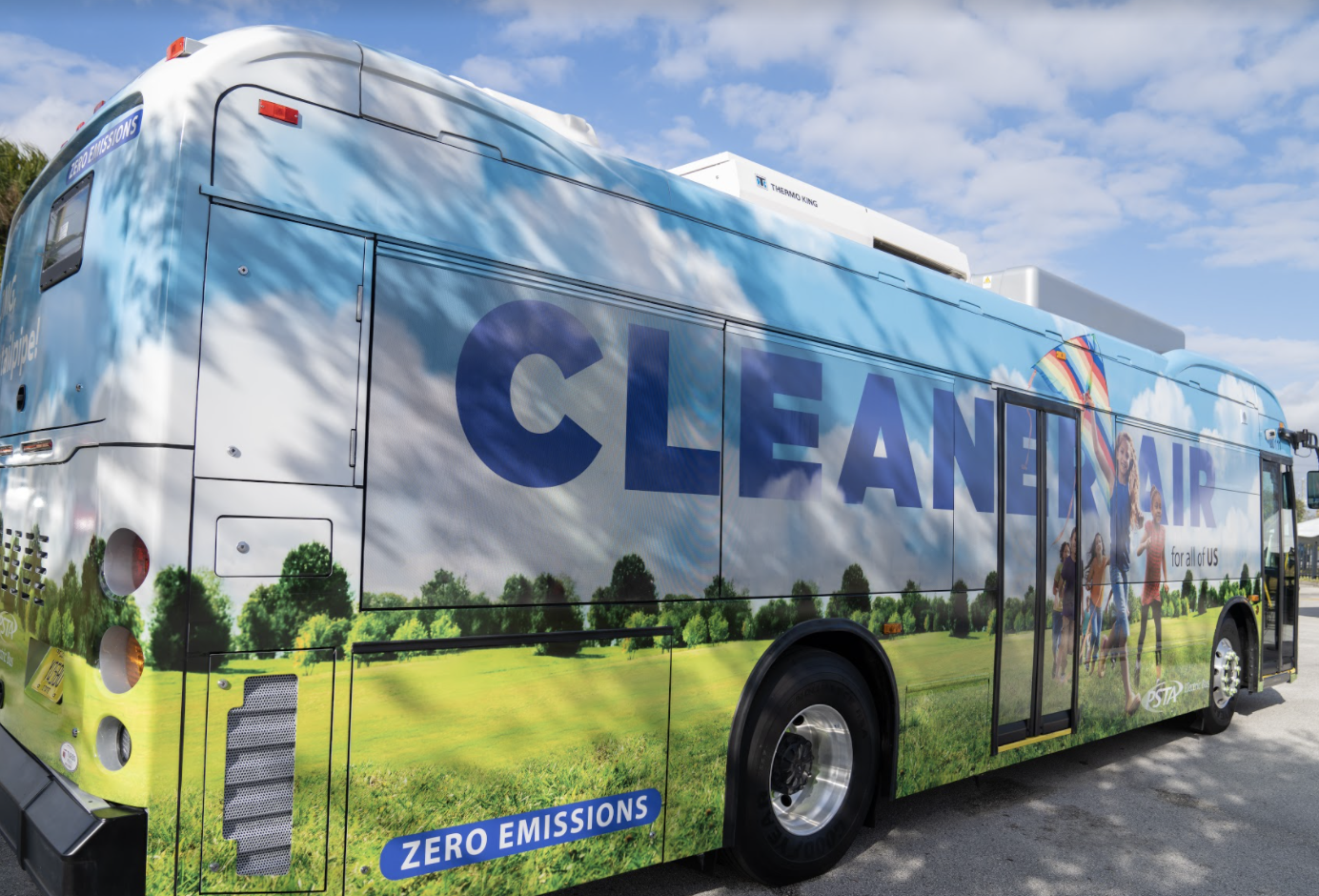On January 20, 2021, Joe Biden was sworn in as America’s 46th President. He immediately began signing a slue of executive orders, including restoring America’s focus on climate change and commit to electrifying the 645,000 vehicle federal fleet. The White House released its clean energy infrastructure plan that includes installing 500,000 electric vehicle (EV) charging stations across the country, investing in battery storage research and development, and electrifying the nation’s school bus fleet.
The next day, General Motors CEO, Mary Barra, who in 2019 had sided with the Trump administration’s plan to roll back the Clean Car Standards, revealed the company’s commitment to bring 30 new electric models to market by 2025 and ultimately end gas and diesel vehicle production by 2035. Last week Ford Motor Company’s CEO, Jim Farley, disclosed plans to invest $22 million in EVs through 2025, doubling what had been previously committed. And then there is Tesla, which is currently the world’s seventh most valuable company with a market capitalization greater than Toyota, Volkswagen, Daimler, GM, BMW, Honda, Hyundai, Fiat Chrysler, and Ford combined. The political and commercial EV landscape is shifting into high gear.
Within this rapidly evolving market environment, states, including North Carolina, are seizing the opportunity to increase EVs’ share of vehicles on the road. To explore how North Carolina stacks up against other states, the Southern Alliance for Clean Energy (SACE) and Atlas Public Policy have collaborated on a new brief, “Transportation Electrification in North Carolina.” The new brief follows the recent “Transportation Electrification in the Southeast” brief, also a collaboration between SACE and Atlas, which examined state policy, as well as regulatory, economic development, and investment activity across the Southeast. The North Carolina-specific brief provides a snapshot of the state’s EV market, transportation patterns, policy environment, and opportunities to improve public health, meet climate change goals, and spur economic growth.
This blog post is the first in a series examining the study’s findings. Upcoming posts will look in greater detail at how lawmakers, public agencies, utilities, and regulators can advance policies and accelerate investment, providing all North Carolinians access to electric transportation’s economic, public health, and climate benefits.
[button color=”blue” url=”http://bit.ly/EVsinNC”]Download the Brief[/button]
[button color=”blue” url=”https://cleanenergy.org/?s=EVsinNC”]Read the Blog Series[/button]
North Carolina has a lot Riding on Transportation Electrification
Transportation is the leading source of greenhouse gas emissions – both nationally and in the Old North State. In fact, the transport sector accounts for 42.5% of CO2 emissions in North Carolina. There is no way to meet the state’s climate goals without significantly reducing transportation emissions. But opportunity abounds. As the brief discusses, the price tags for EVs are coming down as battery prices continue to plummet; the range of new passenger EVs average 286 miles per charge; public EV charger deployment is on the rise; the electric truck and bus markets are poised to boom. North Carolina’s challenge is figuring out how to accelerate consumer and fleet EV adoption while ensuring all residents have equitable access to electric mobility.
Electricity Consumed from EV Charging in North Carolina

Rising to that challenge will not only address climate change but will also create jobs. North Carolina currently ranks in the top 10 states in the nation in terms of clean energy employment, and the sector is employing more than 10 times as many people as the fossil fuel industry. The state also leads the nation in clean energy jobs located in rural areas. North Carolina is beginning to see a boost in EV-related jobs and, according to a recent analysis by E2, ranks 14th in the nation in clean vehicle employment with over 7,100 jobs (and growing) across the state. The inflow of manufacturing investment into North Carolina could create a virtuous cycle where in-state medium and heavy-duty EV manufacturers like Daimler, Volvo, Freightliner, and Arrival feed into the increased EV production supply chain in the region.
North Carolina’s Passenger EV Market is Gaining Momentum, Slowly
North Carolina ranks 17th nationally for both passenger EV sales and fast charging station deployment. But when the state’s population is taken into account, those rankings fall to 27th and 37th, respectively, demonstrating ample room for growth.
Electric Vehicle Market in North Carolina Through 2020

The state’s EV market expanded by a factor of five between 2015 and 2019 but still lags behind neighboring Georgia and Virginia as well as Florida. In 2020, North Carolina’s EV market showed resilience, growing by 5% despite EV sales dropping 3% for the year nationwide due to pandemic disruptions. And in Q3/Q4 of 2020, the EV share of total passenger car sales in the state, excluding light-duty pickup trucks, reached as high as 10%.
Electric Vehicle Market in North Carolina

North Carolina leads the Southeast in EV planning. Governor Roy Cooper’s Executive Order 80 committed NC to address climate change and transition to a clean energy economy. The order required the Department of Transportation and the Department of Administration to write zero-emission vehicle (ZEV) plans. These plans are blueprints to moving the state’s EV market forward.
Another ace up the state’s sleeve is its cities: The Cities Initiative is a collaborative effort established by the state’s Department of Environmental Quality and led by the Environmental Defense Fund to advance North Carolina local governments working to reduce their greenhouse gas emissions. The cities involved include Raleigh and Charlotte who have plans to electrify municipal and community transportation.
Electric Bus and Truck Markets are Big Opportunities for North Carolina
In 2020, Governor Cooper signed the Multi-State Medium and Heavy-Duty ZEV Memorandum of Understanding. ZEV MOU signatories commit to electrifying trucks and buses in their states. In addition to climate emissions reductions, electrifying trucks and buses will deliver significant public health and economic development benefits to North Carolina:
- Diesel pollution contains 40 toxic compounds associated with a wide range of adverse health impacts.
- 2.5 million North Carolinians suffer from lung diseases that air pollution worsen.
- In 2018, an estimated $460 million worth of diesel-powered truck freight rolled over North Carolina’s roads, ranking it 12th nationally.
- North Carolina is home to several medium and heavy-duty EV-related businesses, including auto manufactures like Daimler’s Thomas Built Buses, Volvo North America (makers of Mack trucks), Freightliner trucks, and delivery van manufacturer Arrival, EV charging infrastructure companies like ABB and Siemens, and supply chain businesses like Eaton, providing significant EV sector job growth opportunities.

In 2020, the state issued its first electric transportation awards through the Volkswagen Settlement, which included providing $6 million for electric transit and school buses, and Duke Energy’s electric school bus program was approved by regulators, enabling the utility to invest in 30 school buses statewide. The school buses funded by the Volkswagen Settlement and Duke will be among the first deployed in the state. In comparison, North Carolina’s approximately 61 electric transit buses represent 5% of the state’s transit fleet and rank it #7 in the country for transit electrification.
Passenger vehicles accounted for 73% of the total 121 billion annual vehicle miles traveled (VMT) in North Carolina in 2018, but trucks and buses contribute an outsized portion to climate and air pollution emissions with considerable public health impacts. For example, commercial trucks, which make up 7% of annual VMT in North Carolina, account for 19% of the state’s nitrogen oxide (NOx) emissions.
Supportive Public Policies and Utility Engagement Will Make the Difference
Public Policy Matters (Part 2 teaser)
To seize light, medium, and heavy-duty EV market growth opportunities, North Carolina will need to adopt supportive policies that increase EV availability in the state (currently only 34 of the 52 passenger models available nationwide are available to North Carolinians), generate revenue to invest in transportation climate solutions, and attract EV and supply chain manufactures to expand production and create jobs.
The second installment of this blog series will discuss policy considerations outlined in the North Carolina Transportation Electrification brief, including speeding up the implementation of existing EO80 ZEV Plan policy priorities to:
- Electrify 572 identified state fleet vehicles and save taxpayers an estimated $3.8 million and reduce emissions by over 22,000 metric tons
- Support transit agencies’ conversions to electric bus fleets
- Create ”EV make ready” building codes to drive down the cost of charging station installation
- Explore financial incentives to encourage the consumer market
- Establish a regional transportation initiative to benefit consumers and businesses
- Offer innovative electricity rates to support EV adoption and encourage charging when it is beneficial for the grid
The next blog will also discuss how North Carolina can simultaneously leverage the work of California, Colorado, Massachusetts, New York, and other leading EV states that are enacting innovative policies to increase consumer access, generate investment capital, and ensure equitable access to all.
Utility Engagement Matters (Part 3 teaser)
As more light, medium, and heavy-duty EVs displace gas and diesel vehicles, the energy that powers transportation shifts from petroleum to electricity. Strategic utility engagement to advance the EV market has proven to generate consumer, electric grid, and climate benefits. National examples highlighted in the brief will be examined in the third installment in this blog series, as will EV actions being taken in North Carolina by Duke Energy, the state’s electric member cooperatives, and municipal utilities that include highway corridor fast-charging, EV rebates, school bus electrification, vehicle-to-grid charging studies, and multi-unit dwelling charging programs.
Duke Energy’s recently approved $25 million electric transportation pilot program puts North Carolina at #7 nationally for utility EV investments despite representing only 1% of total utility investments nationwide. There is an opportunity and need to engage the state’s utilities more and faster. After all, every gas-powered car, truck, and bus bought today moves us further away from the potential of North Carolina’s clean energy economy ambitions and represents lost revenue potential for electric utilities, revenue that can be leveraged to put downward pressure on electric utility rates for all North Carolinians.
Electrify the South is a program of the Southern Alliance for Clean Energy that leverages research, advocacy, and outreach to promote renewable energy and accelerate the equitable transition to electric transportation throughout the Southeast. Visit ElectrifytheSouth.org to learn more and connect with us.
[button color=”blue” url=”http://bit.ly/EVsinNC”]Download the Brief[/button]
[button color=”blue” url=”https://cleanenergy.org/?s=EVsinNC”]Read the Blog Series[/button]
#EVsinNC



